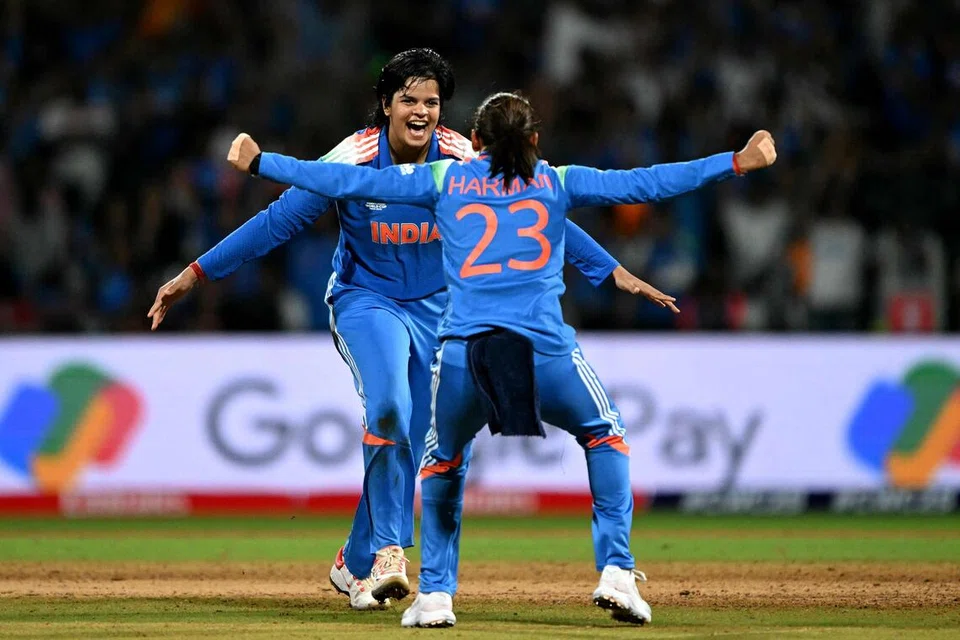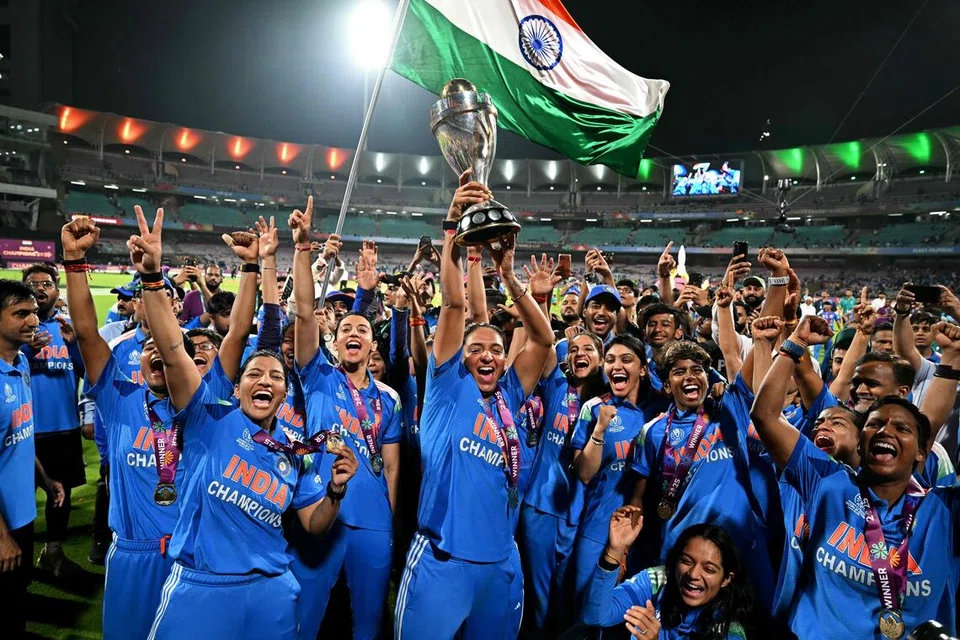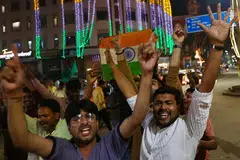I’ve watched a lot of Indian cricket, but nothing has felt as profoundly transformative as the night Harmanpreet Kaur’s India lifted the Women’s World Cup in Navi Mumbai.
You could sense it in the 45,000-strong roar; you could feel it in the way strangers in blue smiled at one another.
When Harmanpreet clung on to that match-winning catch against South Africa, it wasn’t just a trophy secured – it was a threshold crossed.
India’s 52-run victory over South Africa on Nov 2 did more than break Australia’s decade-long stranglehold on the Women’s World Cup.
It reset expectations, rebalanced power, and signalled the arrival of an ecosystem that can sustainably produce and monetise elite women’s cricket.
For the first time since 2000, a team other than Australia or England lifted the trophy. That matters far beyond symbolism.
For years, women’s cricket in India has lived in the shadows of the men’s game, often celebrated episodically and forgotten quickly. This campaign rewrote that habit.
India stumbled through three straight losses in the league stage, and the old doubts resurfaced – “good, but not quite good enough”.
Then came the semi-final against Australia, the perennial champions level. I genuinely felt everything change that night.
Jemimah Rodrigues’ unbeaten 127 under pressure wasn’t just a great innings; it was a declaration that the narrative had flipped. Harmanpreet’s composure beside her, the 167-run stand, the record chase – this was the pivot from plucky to inevitable.
The final completed the arc. Shafali Verma – only in because of an injury – played like the protagonist of a sports novel: 87 off 78 balls, then two razor-sharp wickets when Harmanpreet followed her instincts and tossed her the ball.

Deepti Sharma stitched the result together with a complete, old-school all-rounder’s performance: runs of consequence, wickets of incision, and a presence that steadied everything around her.
And then Amanjot Kaur’s tumbling dismissal of Laura Wolvaardt – South Africa’s heartbeat – felt like the precise moment a dream becomes history.
What has changed is not only on the field. This triumph is the first time I’ve seen the ecosystem hum in harmony for the women’s game.
Pay parity in domestic match fees since 2022 wasn’t a headline blip; it was a foundation. The Women’s Premier League (WPL) gave faces and stories a recurring stage, not a cameo slot.
And now, the World Cup has done for women’s cricket what the 1983 triumph did for the men: it has made aspiration contagious.
During a match-watch party, a young girl clutched a cardboard bat with “Jemimah” scribbled on it; she wasn’t posing for Instagram – she was planning a life.
The cultural spillover is visible. During the final, a men’s T20I between India and Australia was happening in Hobart, and – for perhaps the first time I can remember – more of my chats, timelines, and family groups buzzed about the women.
Search trends spiked for Jemimah and Shafali; followership charts jumped. This matters because attention is the currency that funds the next decade: sponsors follow it, broadcast deals price it, and little girls measure themselves against it.
For Shafali, the evening was also a circle closed. From cutting her hair short in Haryana to pass as a boy just to play, to becoming the youngest to hit a World Cup final fifty in blue – it’s the kind of story that used to be framed as “despite the system”.
Now, thanks to administrative courage and strategic patience, we can finally say “because of the system”. That system is still imperfect, but it is no longer indifferent.
What does this win mean next?
In 2013, a World Cup in India “barely rippled”. Hotels were budget, warm-ups were against junior boys, and the men’s domestic final displaced the women’s showpiece venue.
Twelve years on, the calculus has flipped: a packed stadium, a compelling, metrics-rich product, and a policy-enabled pipeline. The narrative has shifted from validation to valuation.
The immediate horizon is clear: higher rights, stronger sponsorships, fuller calendars, and a talent pipeline emboldened by role models who are no longer exceptions.
Coach Amol Muzumdar called it a watershed for Indian cricket, not just women’s cricket, and I agree. The divide in how we watch, argue about, and emotionally invest ourselves in the men’s versus women’s game began to blur this tournament.
You could hear it in living rooms; you could see it at DY Patil stadium. The old patronising compliments – “good effort, almost there” – have given way to the only verdict that truly matters in sport: Champions.
I keep replaying one image: Harmanpreet backpedalling, eyes fixed, hands sure, as the ball dropped into her palms and the stadium detonated. That catch felt like the country catching up with its women – finally, fully.
If the 1983 triumph taught a generation to dream, Nov 2, 2025, taught a new one to dream in a different register: with names like Harman, Jemimah, Deepti, and Shafali ranking beside Kapil, Sachin, and MSD.




